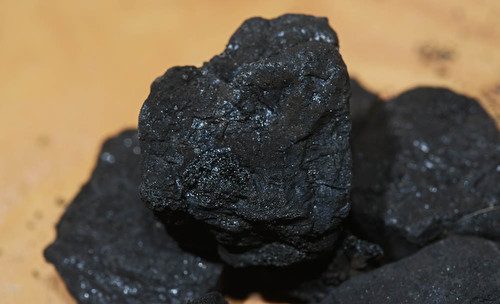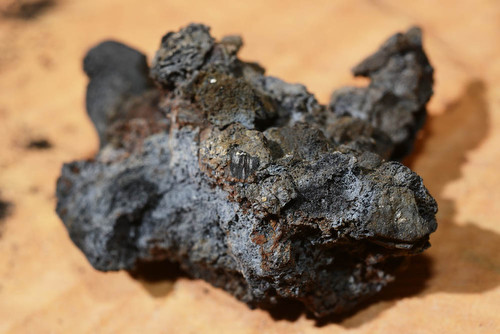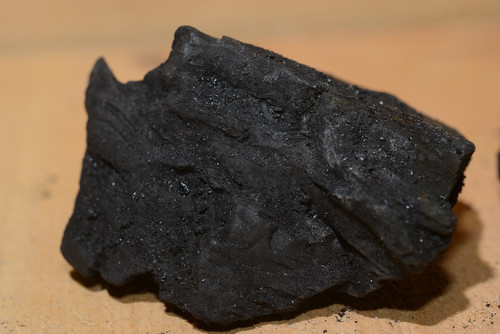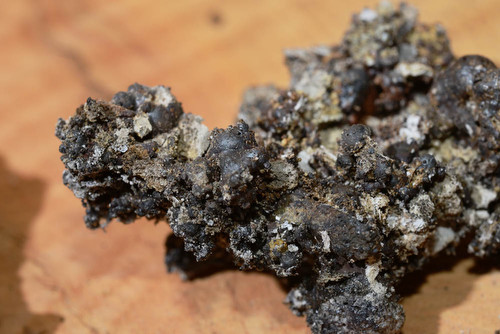About Coal, Coke and Charcoal: What are they and which should I use?
What is coal?
Coal: Coal is fossilized plant material, and varies greatly in it’s properties. There are four main types.
Antracite is “hard coal” has 86-98% carbon content and has 13-15 thousand BTU’s per pound.
Bituminous is “soft coal” has 45-86% carbon content and 10-15 thousand BTU’s per pound.
Sub-bituminous has about 35-45% carbon content and 8-13 thousand BTU’s per pound, and generally lower sulfur content.
Lignite is “brown coal” geologically speaking, with a low 25-35% carbon content, and between 4 and 8 thousand BTU’s per pound.
What is coke?
Coke: Coke is coal or petroleum products that have had the volatiles driven off with a distillation process, leaving nearly pure carbon. It is analogous to charcoal in that charcoal is wood that has been distilled to carbon. You make coke when properly using coal, or you can buy it already processed. Blacksmith coke has 12,500 BTU’s per pound.
What is charcoal?
Charcoal: Charcoal is wood that has been superheated without the presence of oxygen. All the volatiles are driven off leaving just carbon. Charcoal has 7-8 thousand BTU’s per pound.
Which fuel should I use? 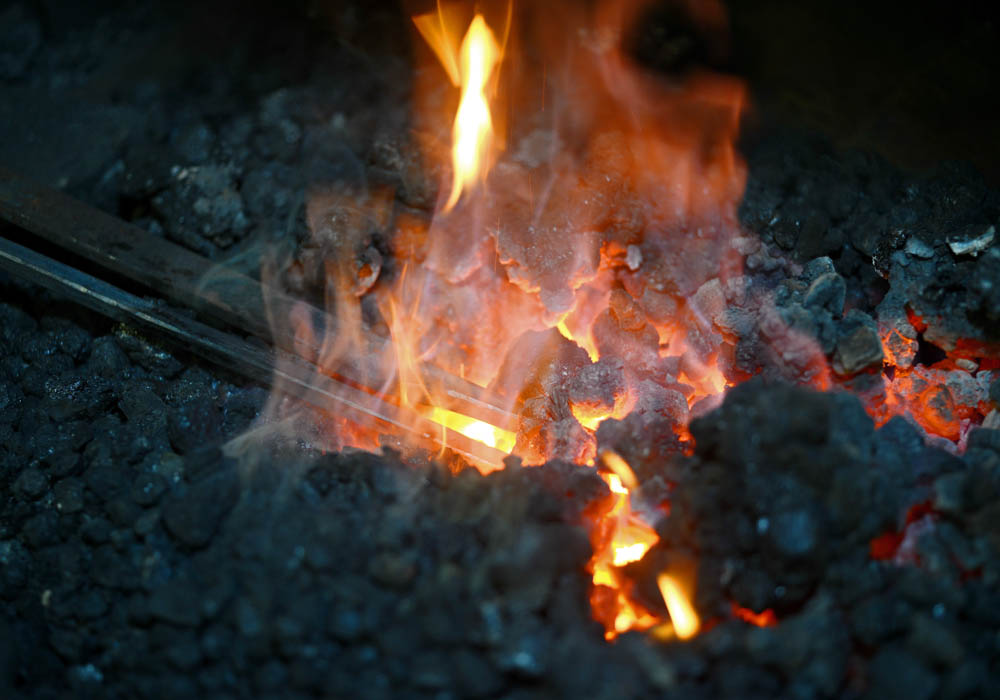
Bituminous coal, coke and charcoal are all used for blacksmithing fuel. Bituminous metallurgical coal is easy to use, has lower sulfur and ash, and cokes easily. Coke burns cleaner with almost no smoke and is therefore preferred in areas where coal smoke may be considered a nuisance. It is a little harder to keep the fire going and needs a constant source of air. Charcoal has been used for centuries, and depending on the quality, can be used for all blacksmithing. Other solid fuels have been, and are still being used for forging. These include pine bark, cactus ribs, and nearly all hardwood and even pine wood.
If you intend to use coal be sure and ask for the analysis data, a description of the coal in measurable terms. Good metallurgical coal will have similar to the following analysis:
-
-
- Carbon: 55-65%
- Volatiles: 30-40%
- Ash: 7-11%
- Moisture: 2-3%
- Sulfur: 1-2%
- BTU’s 13,500-14,500 per lb.
-
For comparison, here are some other fuel values:
-
-
- Propane: 22MBTU/lb
- Corn cobs: 8MBTU/lb
- Waste Oil: 17MBTU/lb
- Wood: 6MBTU/lb (highly variable)
-
What are volatiles?(picture)
Volatiles are the portion of the coal that makes the smoke and flame, and is made up of tars, coal gas, turpentine, alcohols, etc. that are flammable. The lower the volatiles the better, but the volatile ignite at a lower temperature and aid in getting you coal fire going..
What is a clinker?
Clinker is the unburnt residue that is left after the coal has burnt. It consists of silica, which may appear as glassy blobs, and slag. Clinker varies in color, but gives the impression of porous lava. Clinkers accumulate in the bottom of the fire and obstruct airflow, cooling the flame, and may inhibit the ability to forge weld. Clinker production varies inversely with the quality of coal. In poor coal it may be necessary to remove clinkers often enough to be annoying, sometimes every hour or so. Good coal will produce little clinker and may only need to be removed once or twice per day.
Why use coal or coke over using propane?
Good question! They each have their advantages and disadvantages. I use both depending on what I am doing. All three can be used with or without electric power, depending on your forge.
Propane is noisy(you will need to turn up the volume on the boom box), throws a lot of heat out at you (nice feature in the winter), and burns at the same rate whether you have iron in the fire or not. It may or may not get hot enough to weld, and welding flux will damage your refractory over time. But..easy to use, no smoke, and you can have a couple or three pieces in the fire without worry, except for scaling up. You can heat a longer piece, and more evenly, but you will need tongs more, and the slack tub more. Propane forges improperly tuned create more scale. Propane leaks … boom.
Coal is quiet and is not so hot to be around (nice feature in the summer). You can save fuel with coal because when the blower is off or choked, the fire banks down. Crank ‘er up and you have heat again. It will definitely get hot enough to forge weld, but you can also burn up your work fast if you don’t pay attention. Coal is nice if you are working one piece, or two if careful. You can heat shorter sections (with propane you almost always heat up more metal than you need, and must use tongs or resort to the slack tub to cool the held end), and you can heat metal differentially. That is you can heat one side more than the other if need be. Smoke is no problem if you build and maintain your fire properly, but some folks can’t use coal in town due to the smell for neighbors. In which case, you can switch to coke – no smoke, no smell. AND…. coal is traditional for those who care.
Personally, I prefer coal/coke, but the propane forge gets used when I am doing production or things like long twists and tapers.

